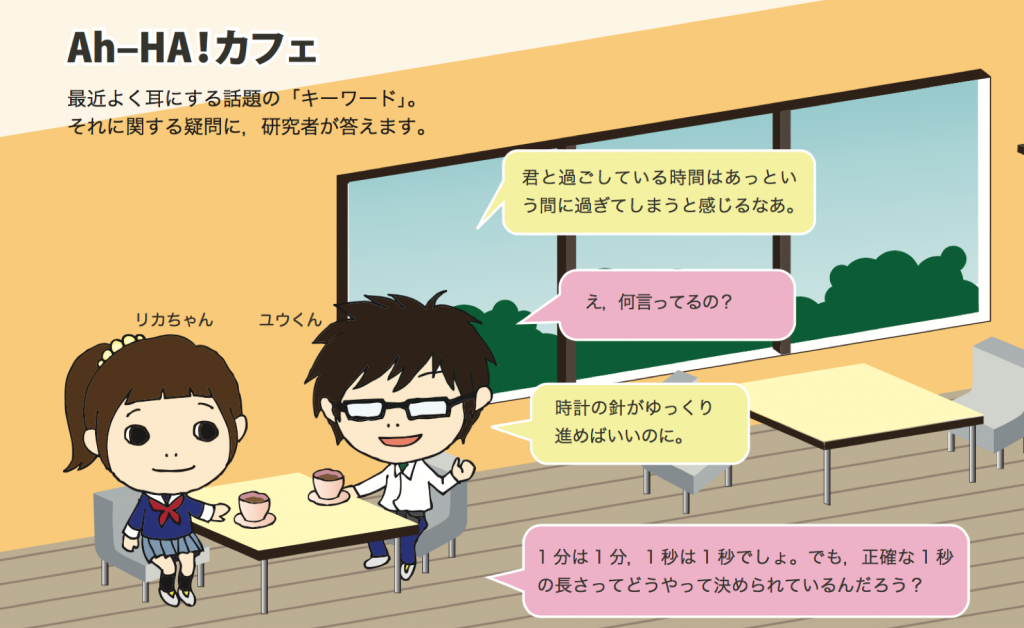- someone
Someone vol.38] [Ah-HA! Cafe] How is the length of a second determined?
2017.03.01
The key to defining the length of time is to find an "exact pendulum" that repeats the same period. Currently, the most accurate pendulum is the oscillation of atoms. The time when the electromagnetic wave absorbed by the cesium atom strikes 9,192,631,770 times is defined as "one second.
However, atoms are so delicate that even touching other atoms can cause errors. In order to create a more accurate clock, we came up with the idea of isolating atoms one by one in a lattice of light. We irradiated strontium atoms, which we had been studying, with light to find the optimum wavelength to isolate the atoms. Finally, he succeeded in fitting the atoms one by one into the hollows of the light waves, just as an egg fits into an egg carton. This "optical lattice clock" has achieved a high degree of accuracy of only one second in 16 billion years. This is an astonishing accuracy since the universe was born 13.8 billion years ago.
With clocks of this precision, we see more than just time. For example, according to the theory of relativity, time moves forward differently depending on the height from the ground. In fact, when two clocks were placed at different heights of 15 meters, it was observed that when the clock at the higher height moved forward by 1 second, the clock at the lower height moved forward by 0.00000000000000000000000016 seconds. We can see the height in terms of the time difference. If we place many clocks, we will be able to see the distortion of the earth due to the gravitational pull of the moon, the existence of underground mineral resources, and so on. It is not an exaggeration to say that we are approaching an era in which the advancement of clocks will change the way we see the world.

Interviewed by: Hidetoshi Katori, Professor, Graduate School of Engineering, The University of Tokyo
Katori Creative Temporal Space Project HP:.http://www.jst.go.jp/erato/katori/feature/
(Text and composition by Yuki Hamada)
